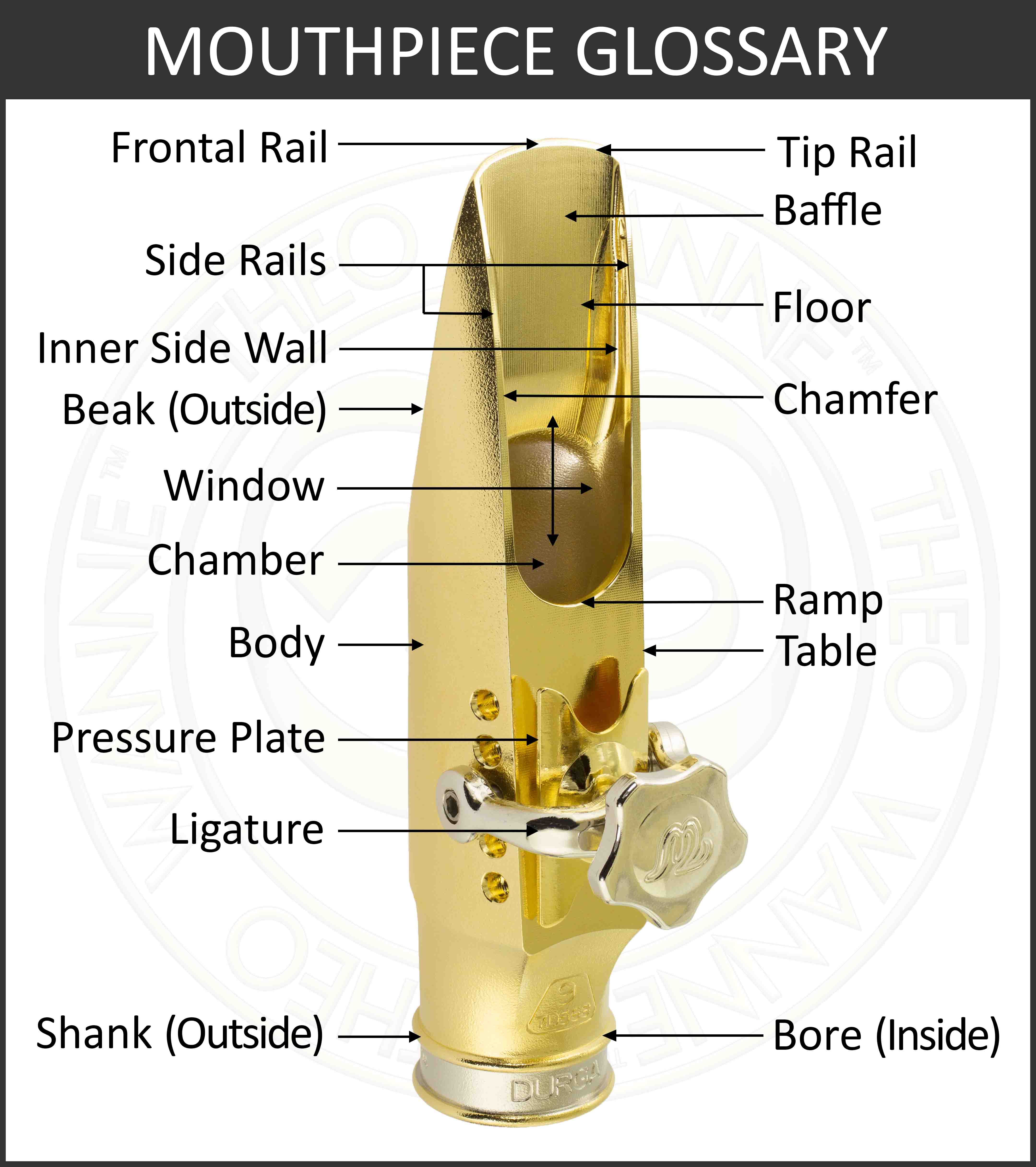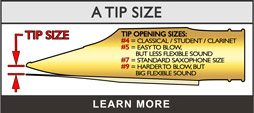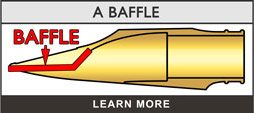DEFINITIONS

- Baffle – The portion of the mouthpiece directly behind the tip rail. The shape of the baffle determines the brightness or darkness of the mouthpiece, as well as its “buzz”.
- Body – The Middle portion of the mouthpiece that the ligature fits over; the widest & largest part of the mouthpiece.
- Beak – The front-outer portion of the mouthpiece that one’s mouth fits over while playing. It extends from the tip of the mouthpiece to the Body of the mouthpiece.
- Bore – The rear-inner portion of the mouthpiece that fits on the neck of the saxophone. It usually extends a bit further into the mouthpiece than the neck does.
- Break Point – The point from which the reed first separates from the flat surface of the table. The start of the facing curve.
- Chamber – The open area in the middle of the mouthpiece between the floor and the bore. A large chamber produces a fat & spread sound, while a small chamber produces a more focused sound.
- Chamfer – The beveled edge on the side rails that surrounds the entire window.
- Facing Curve – The continuous curve starting at the break point and ending at the tip rail. The facing curve can be seen on a mouthpiece by looking at it from the side. This curve varies greatly among mouthpiece brands and plays a crucial role in the response the mouthpiece gets. It is very important that the facing curve on both of the mouthpieces ‘side rails’ be parallel or even (unless made intentionally uneven for a specific purpose. I know some Refacers experimenting with this). It is also important that the curve be continuous and gradual, with no flat spots or bumps.
- Facing Curve Length – The distance from the break point to the tip of the mouthpiece. – OR – The distance from where the thinnest measuring feeler gauge hits, to the tip of the mouthpiece. This distance is always measured in millimeters. The response of the lower notes on a horn is dependent upon this length.
- Floor – The inner portion of the mouthpiece behind the baffle and before the chamber. The higher this section is the more projection the mouthpiece has. The lower it is, the darker the mouthpiece will be.
- Frontal Rail – The very tip of the mouthpiece. It is the portion of the mouthpiece furthest in ones mouth while playing.
- Inner Side Walls – The walls on the inside of the mouthpiece, extending from the floor up to the side rails. These are often concave in shape (like an Otto Link) or flat (like a Brilhart and most clarinet mouthpieces).
- Ramp – The underside of the table. It starts at the back of the window and slopes down into the chamber of the mouthpiece.
- Shank – The entire outer portion of the mouthpiece just behind the table, that is closest to the saxophone neck.
- Side Rails – This is where the reed seals on each side of the window. They are what the reed vibrates against when the reed is on the mouthpiece. The shape of the side rails is the facing curve.
- Table – The flat portion of the mouthpiece that the reed sits on, and the ligature clamps the reed to.
- Throat – The area inside the mouthpiece where the Chamber transitions to the Bore. The throat can be round, half-round (like Selmer soloists) or square (like Selmer S-80 and S-90 mouthpieces).
- Tip Opening – The distance between the reed and frontal rail. The larger this opening the more air one has to blow into the mouthpiece; the smaller this opening the less air one has to blow into the mouthpiece.
- Tip Rail – At the very tip of the mouthpiece, this is where the front of reed seals with the mouthpiece while vibrating. The tip rail thickness helps determine the response of the mouthpiece. If it is too thin the mouthpiece may “chirp”. If it is too thick the mouthpiece may play “dead”.
- Window – The open area of the mouthpiece extending between the tip rail and the table, between the two side rails.













